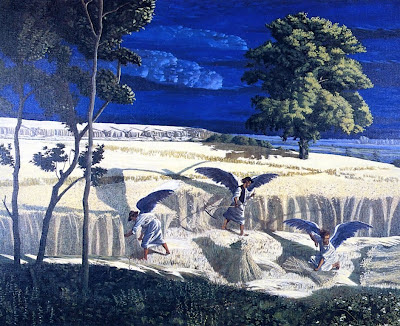
Fractal design by Albert Klein
Recently, I was surprised when the person, confirming to be Hindu, has equated Hinduism to paganism. It has a certain negative shade because of the association of paganism with the worship of many gods, and their many idols. Except a sign that the belief does not belong to three Abrahamic religions (as Judaism, Christianity, and Islam), many distinctive signs are here but the most important was whether or not someone worshipped the one true God. If to specify: belief in one personal and transcendent God.Hinduism at first blush appears to conform to paganism. It seems to worship many gods and seems to do so by worshipping different images. At first blush. But in the Biblical Book of Samuel, the Lord said: "Do not consider his appearance or his height... The Lord does not look at the things people look at. People look at the outward appearance, but the Lord looks at the heart."
So, it is true that there are many gods, but while these various gods are considered different gods in paganism, in Hinduism they represent the various forms of the one and same God. Thus, this plurality in the sense that the one God appears in various forms. If you questioned about this complicated theme even the illiterate villager will answer: Bhagwan Ek hai what means "the Lord is One". He may not be able to figure out in theological terms how the many gods and the one God hang together and he may not be sure about the hierarchy of manifestations, but he does know that ultimately there is only One and that the many somehow merge into the One. And its opinion does not differ from Hindu sacred books
Indraṃ mitraṃ varuṇamaghnimāhuratho divyaḥ
sa suparṇo gharutmān |
ekaṃ sad viprā bahudhā vadantyaghniṃ
yamaṃ mātariśvānamāhuḥ ||
They call him Indra, Mitra, Varuṇa, Agni, and he is heavenly nobly-winged Garutmān. To what is One, sages give many a title they call it Agni, Yama, Mātariśvan.(Rig Veda 1.164.46)
If the Hindus have discovered that the Absolute can only be thought of, or stated through the relative, the images, it's depends on sense which you put in it, right? For example, wine and bread were selected by Jesus Himself as symbols to represent His blood and body, despite their ritual use in pagan temples. And when you study Hinduism, it is obvious that it is the One Truth by many names here.
One personal and transcendent Truth.
AkAshAt patitaM toyaM yathA gacChati sAgaram |
sarvadevanamaskAraH keshavaM prati gacChati ||
Just as the rain water that falls from the sky eventually reaches the ocean, so also the worship offered to Him, by whatever name you wish, or in whatever form you like, ultimately goes to the One (the only One) Ultimate, Infinite Supreme Reality. (Mahābhārata)
OM NAMAH SHIVAYA




















